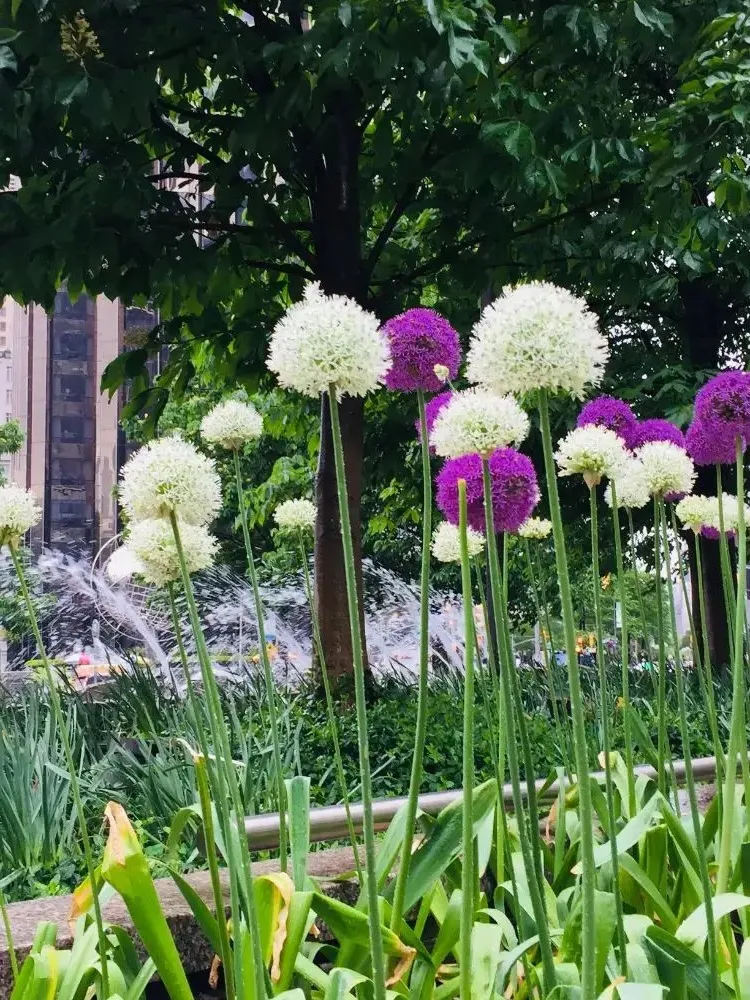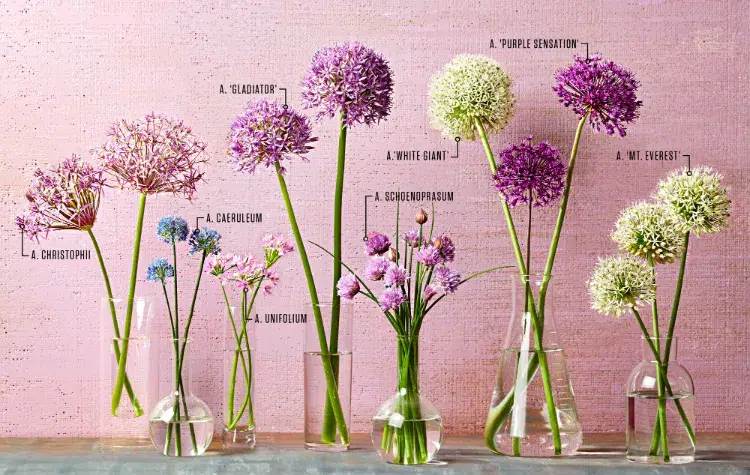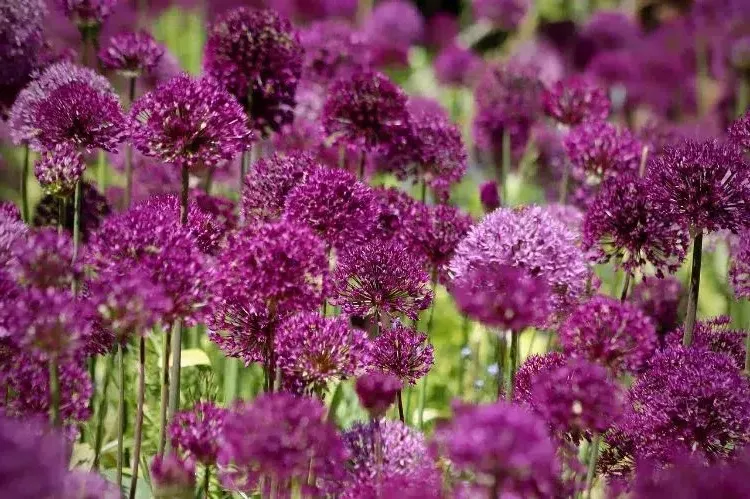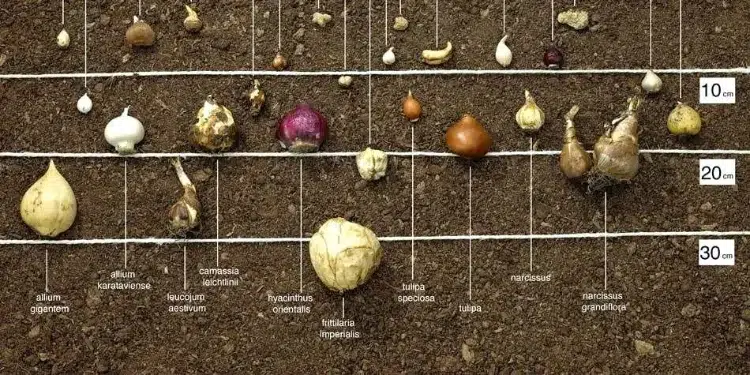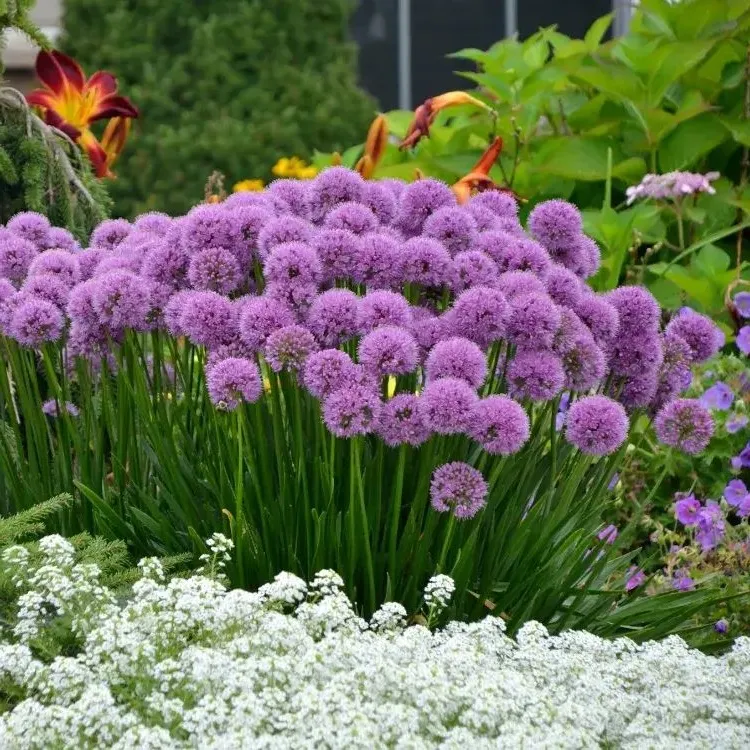The Allium consists of vegetable, decorative, and medicinal plants that are very important for humans. These include onions, common and ornamental garlic, leek, shallot, chives, and others. However, we must know when and how to plant these species to get the most out of them. Is fall a good time to do this? Forgetting the vegetable garden for a moment, we explore what are the steps to successfully plant ornamental garlic and how to care for it.
How to Plant Ornamental Garlic: Alliums Care Guide
Ornamental garlic is an attractive plant that flowers in towering balls in May and June. Fortunately, this plant is rather hardy and can be grown in any climate. Alliums are slender plants with giant flowers, or at least quite large ones, which immediately catch the eye not only thanks to their size, but also because of their mauve, lilac, violet, or white shades.
Which Varieties of Ornamental Garlic for Which Purposes?
Given that its habit varies from species to species, you can plant ornamental garlic in beds or on borders, depending on your preferences and the desired goals. Among the large alliums for beds that reach 90 cm/2.95 ft to 1.5 m/4.92 ft high, we can cite the ornamental garlic Mount Everest, the varieties Globemaster and Purple Sensation (Allium hollandicum), and the giant – Allium giganteum. In the foreground of summer flower beds and along the borders, you can consider Allium cristophii, wild garlic, and the Pinball Wizard cultivar which are more modest in size, but just as decorative. The same goes for roundhead garlic or Allium sphaerocephalon – a beautiful late flowering variety (June-July). In a pot or planter, we can consider planting the ornamental garlic Allium insubricum (Lombardy garlic) which does very well in a container.
When and Where to Plant Ornamental Garlic?
For best results, ornamental garlic should be planted in mid-fall. The end of October is usually a good time to plant bulbs. Just like its edible relatives, ornamental garlic prefers a sunny exposure and well-drained soil, as waterlogged soil exposes the bulbs to the risk of rot. Sites sheltered from the wind are more suitable for its cultivation than windy areas, because the long stems lie down in strong winds. Once ornamental garlic begins to flower, its leaves begin to die, and that is why combining it with other plants that keep their foliage in summer is a great idea.
Also read: A Guide to Garden Bulbs for Beginners: Learn How to Take Care of Bulbous Plants All Year Round!
How to Plant Ornamental Garlic?
Prepare your soil by ploughing the land and removing all weeds before planting ornamental garlic. Avoid planting in newly amended soils, since this environment may be too rich in nutrients for Alliums. Plant garlic in fall at a depth of about four times the diameter of the cloves. Smaller Alliums are planted 7.5-10 cm/0.32 ft apart, and larger species need at least 20 cm/0.65 ft between bulbs.
Allium Care Tips
Ornamental garlic is drought tolerant and watering is generally not necessary, except in very dry conditions. Alliums grown in containers, on the other hand, need regular watering, as their soil dries out quite quickly. Amending the soil is not required either.
Finally, removing faded flowers and stems from ornamental garlic after flowering is not an essential operation, but this practice can be useful. As already mentioned, the allium is hardy and does not require special care during the winter. Although, plants in pots and planters can be moved indoors as they are more sensitive to winter cold.
Sources used and experts cited: The Royal Horticultural Society

